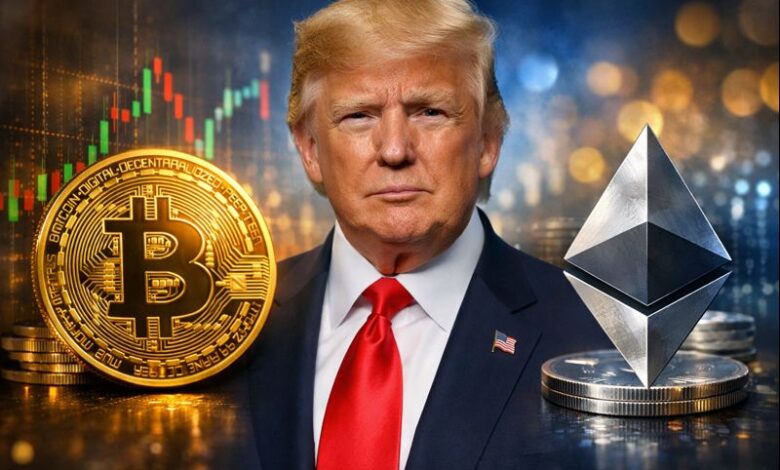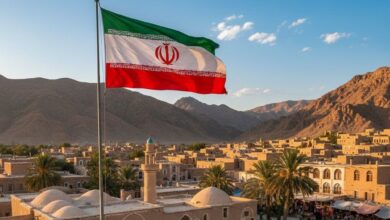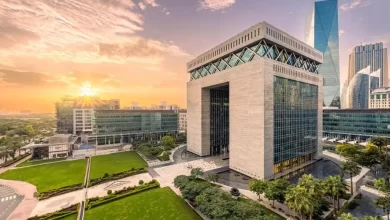20% in Crypto: How the Trump Family Is Rebuilding Its $6.8B Fortune

A notable shift is underway in the financial architecture of one of America’s most prominent political families. According to Bloomberg analysis, roughly 20% of the Trump family’s estimated $6.8 billion net worth is now held in cryptocurrency-related assets, marking a significant departure from the real estate-heavy strategy that historically defined their wealth.
The move places the Trump family among a small group of ultra-high-net-worth households that have embraced digital assets at scale, signaling a broader reassessment of portfolio construction at the intersection of politics, technology, and finance.
How the Trump Family Built Its Crypto Exposure
Bloomberg’s review indicates that the family’s crypto-related holdings amount to approximately $1.4 billion, spread across three main channels:
- World Liberty Financial (WLFI): A fintech platform with deep exposure to crypto-based financial services
- TRUMP Meme Coin: A token leveraging political branding and retail investor momentum
- American Bitcoin (ABTC): A bitcoin mining operation with infrastructure and energy exposure
Together, these holdings represent a strategic diversification beyond traditional asset classes, reflecting growing confidence in digital assets as both an investment and operational ecosystem.
A Break from a Real Estate-Centric Legacy
For decades, Trump family wealth was closely tied to tangible assets, particularly commercial real estate. The pivot toward crypto unfolded gradually but accelerated as digital assets gained institutional legitimacy and regulatory clarity improved in key jurisdictions.
This transition mirrors a broader pattern among global family offices, many of which are reassessing liquidity, portability, and long-term hedging strategies in response to macroeconomic uncertainty and evolving capital markets.
Why the Allocation Stands Out
Wealth strategists note that a 20% crypto allocation is unusually high for politically exposed family offices, where exposure often remains below 5%.
Digital assets offer several structural advantages:
- Greater liquidity compared with real estate
- Reduced reliance on traditional financial intermediaries
- Exposure to emerging financial infrastructure rather than legacy systems
At the same time, crypto introduces volatility and valuation complexity—factors that continue to challenge conservative wealth preservation models.
Crypto Gains Offset by Traditional Market Pressure
Despite the expansion into crypto, the family’s overall net worth has remained relatively flat. Bloomberg points to the declining share price of Trump Media & Technology Group (TMTG) as a key offsetting factor.
This dynamic highlights the tension within hybrid portfolios that combine high-volatility digital assets with publicly traded equities and legacy businesses, all of which respond differently to macroeconomic and political cycles.
Policy, Perception, and Political Finance
The scale of the Trump family’s crypto exposure has also renewed scrutiny around governance and disclosure. While digital assets are legal investment vehicles, their cross-border nature and evolving regulatory treatment raise questions around transparency and potential policy overlap.
These debates are not unique to the U.S. Globally, political figures and families are increasingly engaging with crypto—as investors, builders, and policymakers—forcing regulators to reconsider how political finance intersects with decentralized systems.
A Signal for Wealth Management’s Next Phase
Beyond politics, the Trump family’s crypto allocation underscores a broader shift in wealth management. High-profile adoption often serves as a signal to other family offices, accelerating experimentation with digital assets, tokenized structures, and blockchain-based finance.
As crypto matures, its role in political and institutional portfolios is likely to expand—bringing both opportunity and new governance challenges.
The Trump family’s move into crypto represents more than a portfolio adjustment. It reflects a recalibration of how power, capital, and technology increasingly converge. Whether this strategy proves resilient over the long term remains to be seen, but its implications for political finance and wealth management are already reverberating across markets.





